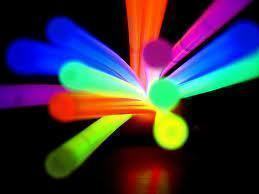What is Phosphorescence?
Phosphorescence is an effect in which some chemicals re-emit light that they absorb. It is similar to fluorescence, except that the chemical reactions within phosphorescent materials happen less often, thus they take longer to emit light. Phosphorescent materials can be recharged by being exposed to light and may store light for several hours before it is re-emitted. Phosphorescence and fluorescence make up the vast majority of glow-in-the-dark products, with fluorescence generally being used in situations that involve a steady power source and phosphorescence being used in situations that do not.
How Phosphorescence Works
Phosphorescent materials store and re-emit light because of their unusual property of trapping electrons in a higher state of movement. As light comes in contact with the material, light photons are transferred to the material and give some of their energy to the electrons within it, causing the electrons to move to a higher energy state around their nucleus. While most photoluminescent materials allow their excited electrons to quickly return to a ground state, phosphorescent materials trap their electrons in a higher energy state for minutes or even hours.
Applications
Phosphorescent materials are used in a wide variety of applications and products. For example, phosphorescent powder and gel can be found in many different toys, such as glow sticks and other glow-in-the-dark products. Additionally, phosphorescent materials are used in industrial applications in the form of glow-in-the-dark ink or paint for labeling purposes. Additionally, phosphorescent dyes are used for health purposes in order to identify a medicine, device, or artery inside the human body. In this case, phosphorescent dyes are illuminated with x-rays or other electromagnetic waves that release photons.
Advantages
Phosphorescent materials have several advantages that photoluminescent materials do not. For example, phosphorescent materials store light for several minutes or even hours and re-emit a significant amount of light over a long period of time. Additionally, phosphorescent materials can be recharged when exposed to light or other electromagnetic wave. Phosphorescent materials are also relatively inexpensive and can be used in the form of a powder, gel, liquid, or gas.
Disadvantages
Although phosphorescence can be advantageous, it also has several disadvantages. For example, one cannot be completely sure how bright a phosphorescent material is or how long it will emit light. While most phosphorescent products are precisely measured to provide a certain level of brightness for a few minutes or hours, fluorescent materials may be more ideal for situations that require exact results or long use.


Comments - No Responses to “What is Phosphorescence?”
Sorry but comments are closed at this time.